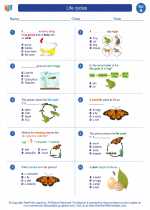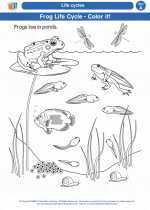Life cycles -> environmental factors
Environmental Factors
Environmental factors are the external elements that can have an impact on living organisms and ecosystems. These factors include both physical and biological components of the environment. Understanding these factors is important for understanding how living organisms interact with their surroundings and how ecosystems function.
Physical Environmental Factors
Physical environmental factors include non-living elements such as sunlight, temperature, water, air, and soil. These factors can have a direct impact on the growth and survival of living organisms. For example, sunlight is essential for photosynthesis in plants, while temperature and water availability can affect the distribution of different species in an ecosystem.
Biological Environmental Factors
Biological environmental factors include living organisms and their interactions with each other. This can include predation, competition for resources, and symbiotic relationships. These interactions can have a significant impact on the population dynamics and diversity of an ecosystem.
Study Guide
- Define environmental factors and give examples of physical and biological factors.
- Explain how physical environmental factors can influence the distribution of species in an ecosystem.
- Describe the impact of biological environmental factors on population dynamics within an ecosystem.
- Discuss the importance of understanding environmental factors for conservation and management of natural resources.
- Identify a local ecosystem and analyze the environmental factors that influence its characteristics and biodiversity.
Understanding environmental factors is crucial for understanding the natural world and for making informed decisions about the conservation and management of our environment. It also helps in understanding the impact of human activities on the environment and the potential consequences for living organisms and ecosystems.
[Environmental Factors] Related Worksheets and Study Guides:
.◂Science Worksheets and Study Guides First Grade. Life cycles

 Activity Lesson
Activity Lesson
 Worksheet/Answer key
Worksheet/Answer key
 Worksheet/Answer key
Worksheet/Answer key
 Worksheet/Answer key
Worksheet/Answer key
 Worksheet/Answer key
Worksheet/Answer key
 Worksheet/Answer key
Worksheet/Answer key
